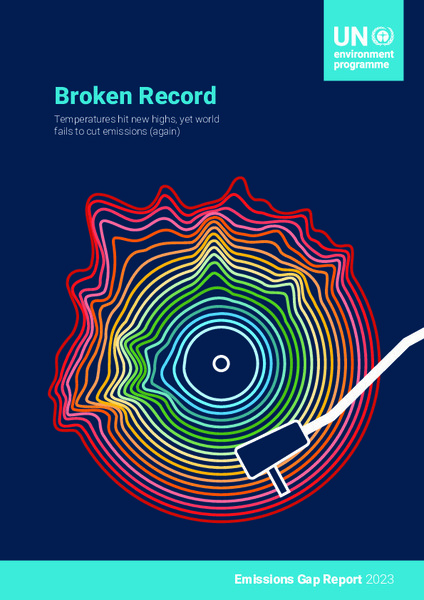| dc.contributor | Early Warning and Assessment Division | en_US |
| dc.contributor.author | United Nations Environment Programme | en_US |
| dc.contributor.other | Olhoff, Anne | |
| dc.contributor.other | Christensen, John | |
| dc.contributor.other | Lamb, William F. | |
| dc.contributor.other | Pathak, Minal | |
| dc.contributor.other | Kuramochi, Takeshi | |
| dc.contributor.other | den Elzen, Michel | |
| dc.contributor.other | Fransen, Taryn | |
| dc.contributor.other | Rogelj, Joeri | |
| dc.contributor.other | Portugal-Pereira, Joana | |
| dc.contributor.other | Burton, Jesse | |
| dc.contributor.other | Muttitt, Greg | |
| dc.contributor.other | Rao, Narasimha | |
| dc.contributor.other | Mulugetta, Yacob | |
| dc.contributor.other | Geden, Oliver | |
| dc.contributor.other | Bui, Mai | |
| dc.contributor.other | Gidden, Matthew | |
| dc.contributor.other | Bustamante, Mercedes | |
| dc.date.accessioned | 2023-11-07T04:26:55Z | |
| dc.date.available | 2023-11-07T04:26:55Z | |
| dc.date.issued | 2023-11 | |
| dc.identifier.isbn | 978-92-807-4098-1 | |
| dc.identifier.other | DEW/2589/NA | |
| dc.identifier.uri | https://wedocs.unep.org/20.500.11822/43922 | |
| dc.description | As this fourteenth Emissions Gap Report shows, not only temperature records continue to be broken – global GHG emissions and atmospheric concentrations of carbon dioxide (CO2) also set new records in 2022. Due to the failure to stringently reduce emissions in high-income and high-emitting countries and to limit emissions growth in low- and middle-income countries, unprecedented action is now needed by all countries. This year, the report thus explores opportunities and challenges associated with energy transitions as well as development and deployment of carbon dioxide removal. | en_US |
| dc.format | pdf | en_US |
| dc.language | English | en_US |
| dc.publisher | United Nations Environment Programme | en_US |
| dc.rights | Public | en_US |
| dc.subject | climate change | en_US |
| dc.subject | emission inventory | en_US |
| dc.subject | carbon emission | en_US |
| dc.subject | atmospheric emission | en_US |
| dc.subject | carbon dioxide | en_US |
| dc.subject | atmospheric carbon dioxide | en_US |
| dc.title | Emissions Gap Report 2023: Broken Record – Temperatures hit new highs, yet world fails to cut emissions (again) | en_US |
| dc.type | Publications | en_US |
| dc.type | Institutional Series | en_US |
| wd.identifier.sdg | SDG 3 - Good Health and Well-Being | en_US |
| wd.identifier.sdg | SDG 7 - Affordable and Clean Energy | en_US |
| wd.identifier.sdg | SDG 13 - Climate Action | en_US |
| wd.topics | Chemicals and Pollution Action | en_US |
| wd.topics | Climate Action | en_US |
| wd.topics | Finance and Economic Transformations | en_US |
| wd.identifier.pagesnumber | 110 p. | en_US |
| dc.relation.TableOfContents | Chapter 1: Introduction | en_US |
| dc.relation.TableOfContents | Chapter 2: Global emissions trends | en_US |
| dc.relation.TableOfContents | Chapter 3: Nationally determined contributions and
long-term pledges: The global landscape and G20 member progress | en_US |
| dc.relation.TableOfContents | Chapter 4: The emissions gap in 2030 and beyond | en_US |
| dc.relation.TableOfContents | Chapter 5: Global energy transformation in the context of the Paris Agreement | en_US |
| dc.relation.TableOfContents | Chapter 6: Energy transitions for low-carbon development
futures in low- and middle-income countries: Challenges and opportunities | en_US |
| dc.relation.TableOfContents | Chapter 7: The role of carbon dioxide removal in achieving
the Paris Agreement’s long-term temperature goal | en_US |
| wd.identifier.doi | https://doi.org/10.59117/20.500.11822/43922 | |





